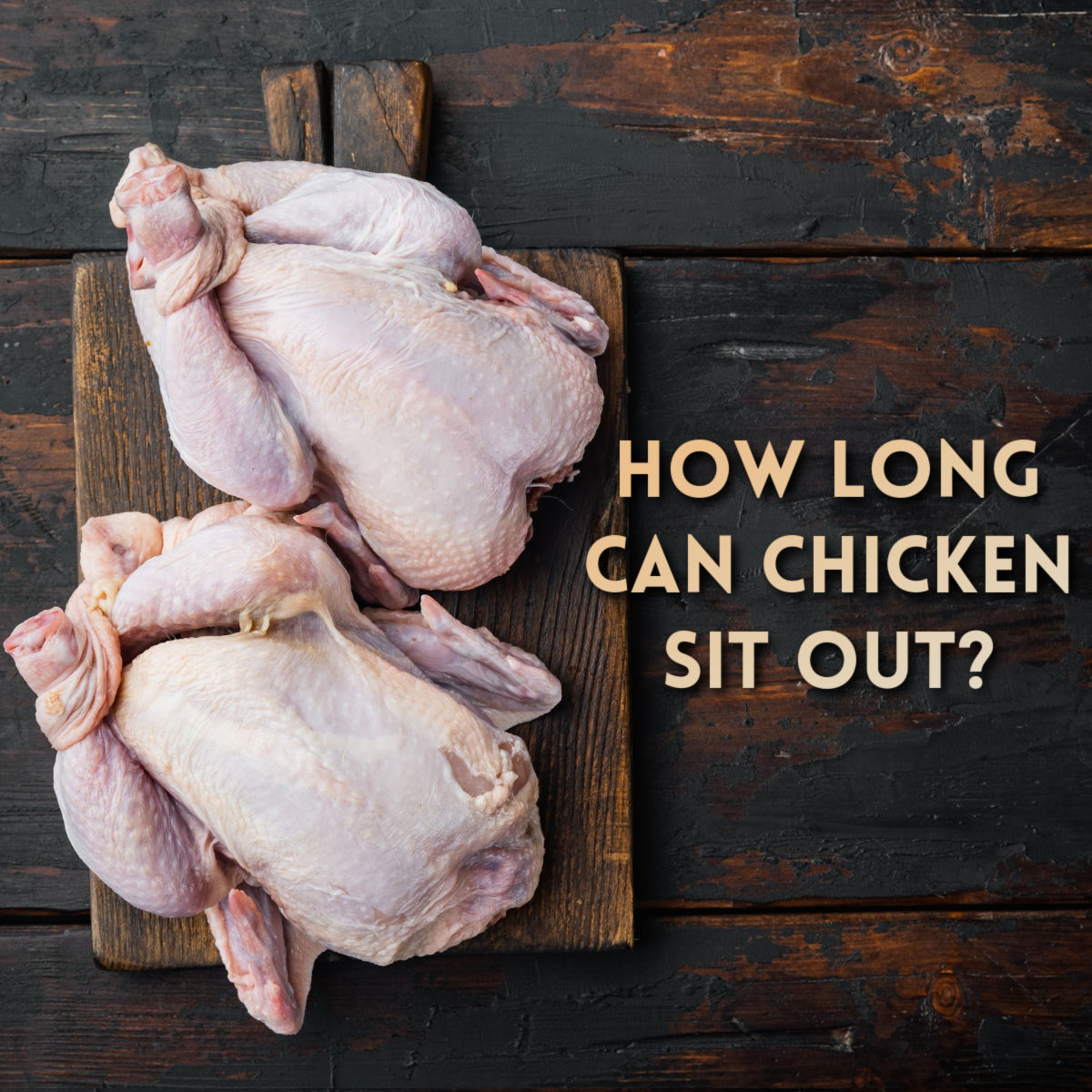Raw chicken is a staple in many kitchens, but did you know that it can become dangerous if not handled properly?
We’ve all heard horror stories of food poisoning caused by improper storage or cooking.
So, what’s the magic number?
At what temperature does raw chicken become a potential health hazard?
In this article, we’ll explore the importance of proper chicken handling and reveal the temperature threshold that should never be crossed.
Get ready to learn some crucial tips to keep your kitchen and your loved ones safe.
at what temperature would stored raw chicken become unsafe to use?
Raw chicken stored at a temperature above 40 degrees Fahrenheit becomes unsafe to use.
Bacteria multiply rapidly between 40-140 degrees Fahrenheit, so it is important to store raw chicken in a refrigerator or freezer immediately after purchase to maintain its safety.
Additionally, raw chicken should not be left at room temperature for more than two hours, and cooked chicken should be refrigerated below 40 degrees Fahrenheit within two hours of cooking.
Thawed raw chicken should reach an internal temperature of 165 degrees Fahrenheit when cooked.
It is crucial to follow proper handling and storage procedures to ensure the safety of raw chicken.
Key Points:
- Raw chicken stored above 40 degrees Fahrenheit is unsafe to use
- Bacteria multiply rapidly between 40-140 degrees Fahrenheit
- Raw chicken should be stored in a refrigerator or freezer immediately after purchase
- Raw chicken should not be left at room temperature for more than two hours
- Cooked chicken should be refrigerated below 40 degrees Fahrenheit within two hours
- Thawed raw chicken should reach 165 degrees Fahrenheit when cooked
at what temperature would stored raw chicken become unsafe to use? – Watch Video


Pro Tips:
1. The temperature at which stored raw chicken becomes unsafe to use is 40°F (4°C) and above. At this point, bacteria like Salmonella and Campylobacter can multiply rapidly, increasing the risk of foodborne illness.
2. Chicken that is stored at temperatures below 40°F (4°C) can remain safe for consumption for up to two days. However, it is recommended to cook or freeze it within the first two days to maintain its quality and reduce any potential health risks.
3. Freezing raw chicken suspends the growth of bacteria completely. This means that frozen chicken will remain safe indefinitely from a bacterial standpoint. However, the quality of the meat may deteriorate over time due to freezer burn.
4. It is essential to avoid storing raw chicken above other food items in the refrigerator. This precaution prevents any potential cross-contamination from occurring if the chicken juices drip onto other foods, leading to foodborne illness.
5. To accurately measure the temperature of stored raw chicken, it is essential to use a food thermometer. Checking the internal temperature is crucial as it should reach a minimum of 165°F (74°C) to ensure killing any harmful bacteria present, making it safe for consumption.
Safe Storage Temperature For Raw Chicken
When storing raw chicken, it is crucial to maintain a temperature of at least 40 degrees Fahrenheit. This temperature slows down bacteria growth and helps prevent the formation of harmful pathogens that can cause foodborne illnesses. To ensure the quality and safety of raw chicken, it is important to keep your refrigerator at or below this temperature. Consider investing in a refrigerator thermometer to monitor and maintain the recommended range. Proper temperature control is a fundamental measure in preventing the growth of harmful bacteria.
Refrigerate Or Freeze Raw Chicken Immediately After Purchase
Raw chicken should be promptly stored in a refrigerator or freezer after purchase to prevent bacterial growth and reduce the risk of contamination and foodborne illnesses.
* Leaving raw chicken at room temperature for an extended period allows bacteria to multiply rapidly, increasing the likelihood of spoilage and potential health risks.
* Storing raw chicken in the refrigerator or freezer slows down bacterial growth, preserving its quality and freshness.
* Proper storage is crucial in maintaining the safety and freshness of raw chicken.
“Storing raw chicken in the refrigerator or freezer slows down bacterial growth, preserving its quality and reducing the risk of spoilage.”
Time Limit For Raw Chicken At Room Temperature
Raw chicken should not be left at room temperature for more than two hours. This two-hour rule is essential in preventing bacteria from multiplying to dangerous levels. Bacteria multiply rapidly in the “danger zone,” which is between 40 and 140 degrees Fahrenheit. Therefore, it is crucial to keep raw chicken refrigerated or frozen to minimize the risk of foodborne illnesses.
If raw chicken has been left at room temperature for more than two hours, it is advisable to discard it to avoid the potential risks associated with bacterial growth.
- Raw chicken should not be left at room temperature for more than two hours.
- Bacteria multiply rapidly in the “danger zone,” between 40 and 140 degrees Fahrenheit.
- Keep raw chicken refrigerated or frozen to minimize the risk of foodborne illnesses.
- Discard raw chicken that has been left at room temperature for more than two hours.
Importance Of Handwashing After Handling Raw Meat
Proper handwashing is crucial when handling raw chicken or any raw meat. Raw chicken can carry harmful bacteria such as Salmonella and Campylobacter, which can cause foodborne illnesses if ingested.
After handling raw chicken, it is important to wash your hands thoroughly with soap and warm water for at least 20 seconds. This simple practice can help prevent the spread of bacteria from the chicken to other surfaces or food items, reducing the risk of cross-contamination.
Required Internal Temperature For Thawed Raw Chicken
When cooking thawed raw chicken, it is crucial to ensure that it reaches the correct internal temperature of 165 degrees Fahrenheit to guarantee its safety. The USDA Food Safety guidelines recommend checking the thickest part of the chicken, such as the breast or thigh, using an instant-read meat thermometer to accurately determine doneness.
By achieving the proper internal temperature, any potential bacteria present in the raw chicken will be eliminated, making it safe for consumption.
- Use an instant-read meat thermometer to check the doneness of cooked chicken.
- Make sure the thickest part of the chicken reaches a minimum internal temperature of 165 degrees Fahrenheit.
“It is crucial to ensure that thawed raw chicken reaches the correct internal temperature to guarantee its safety.”
Refrigeration Timeframe For Cooked Chicken
Once cooked, it is crucial to promptly refrigerate chicken below 40 degrees Fahrenheit within two hours. Quick cooling is essential to prevent bacterial growth and foodborne illnesses.
To aid in rapid cooling, consider dividing the cooked chicken into smaller portions. This allows for faster cooling as the heat dissipates more quickly. Shallow containers or zip-top bags are recommended for this purpose. By spreading out the chicken in the refrigerator, you can further facilitate rapid cooling and maintain the integrity of the chicken.
Improvement:
Once cooked, it is crucial to promptly refrigerate chicken below 40 degrees Fahrenheit within two hours. Quick cooling is essential to prevent bacterial growth and foodborne illnesses.
To aid in rapid cooling:
- Divide the cooked chicken into smaller portions
- Use shallow containers or zip-top bags
- Spread out the chicken in the refrigerator
By following these steps, you can ensure faster cooling and maintain the quality of the chicken.
Recommended Consumption Period For Cooked Chicken
Cooked chicken should be consumed within 3-4 days of refrigeration. In this timeframe, the chicken remains at its best quality and freshness. After this period, the chicken may start to lose its texture, taste, and potentially become spoiled.
To avoid any health risks, it is advisable not to consume cooked chicken that has exceeded the recommended consumption period. If in doubt, always check for signs of spoilage such as changes in smell, texture, or color before consuming cooked chicken.
- Consume cooked chicken within 3-4 days of refrigeration
- Chicken may lose texture, taste, and spoil after this timeframe
- Check for signs of spoilage before consuming cooked chicken
The Risks Of Rinsing Raw Poultry
Rinsing raw poultry is not recommended as it does not effectively remove bacteria and can, in fact, spread harmful pathogens. When raw chicken is rinsed, water droplets can carry bacteria present on the surface and contaminate kitchen surfaces, utensils, and other food items.
To ensure the safety of raw chicken, it is best to handle it carefully, discard any packaging properly, and cook it thoroughly to eliminate bacteria and reduce the risk of foodborne illnesses.
Essential Tips For Handling Chicken Safely
When it comes to handling chicken safely, there are a few essential tips to keep in mind. Firstly, refrigerate raw chicken immediately after purchase and avoid leaving it in a hot car or at room temperature for long periods. Using an insulated container when transporting raw chicken can be beneficial in maintaining a safe temperature.
Fresh, uncooked chicken should be stored in the lowest level of the refrigerator to prevent any potential dripping onto other foods. If raw chicken will not be used within 48 hours, it is recommended to freeze it to maintain its freshness and quality.
Always check the “best if used by” date and examine the chicken for signs of spoilage before using it. Proper handling and storage practices are crucial in preventing foodborne illnesses and ensuring the safety and quality of chicken.
Guidelines For Thawing Raw Chicken
Thawing raw chicken correctly is essential to maintain its safety and quality. There are three recommended methods for thawing raw chicken:
-
Refrigerator thawing: The preferred method for thawing raw chicken is in the refrigerator. Place the chicken in its original wrapping or a sealed, waterproof plastic bag, and allow it to thaw slowly in the refrigerator. A 4-pound entire chicken takes about 24 hours to thaw in the refrigerator, while cut-up portions may require 3 to 9 hours.
-
Cold water thawing: If you need to thaw chicken quickly, you can use the cold water method. Place the chicken in its original wrapping or a waterproof plastic bag and submerge it in cold water. Change the water every 30 minutes to ensure it remains cold. The thawing process using this method typically takes around 2 hours for a 4-pound entire chicken.
-
Microwave thawing: The microwave can be used for thawing raw chicken, but caution must be taken to avoid partial cooking. Use the microwave on the Defrost or Medium-Low setting, microwaving for 2 minutes, then letting it rest for 2 minutes. Repeat this process as necessary until the chicken is fully thawed. It is important to ensure that the chicken does not begin to cook during the thawing process.
By following these guidelines for thawing raw chicken, you can ensure that the chicken thaws safely without compromising its quality or increasing the risk of bacterial growth.
- Maintain proper temperature control when handling raw and cooked chicken.
- Refrigerate or freeze raw chicken immediately after purchase.
- Practice proper handwashing techniques.
- Cook chicken to the required internal temperature.
- Follow recommended storage and consumption guidelines.
By following these precautions, you can mitigate the risks associated with raw chicken and enjoy it safely.

You may need to know these questions about at what temperature would stored raw chicken become unsafe to use?
What temperature should raw chicken be kept at?
To ensure food safety, raw chicken should be kept at a temperature of 40°F or lower. This low temperature greatly inhibits the growth rate of any potential pathogenic bacteria that may be present on the surface of the chicken. By maintaining this temperature, the risk of bacterial growth and potential foodborne illnesses is significantly minimized, ensuring the safety and quality of the chicken. It is important to adhere to these guidelines to protect consumer health and maintain the freshness of the poultry products.
Is raw chicken OK at 50 degrees?
No, it is not safe to consume raw chicken that has been kept at 50 degrees. The USDA recommends storing raw chicken at a temperature below 40°F, as temperatures above this range allow bacteria to grow rapidly. Leaving raw chicken out at room temperature for more than 2 hours increases the risk of bacterial growth, which can lead to foodborne illnesses. Therefore, it is important to ensure that raw chicken is stored properly and not exposed to temperatures above the recommended guidelines.
Can raw chicken be stored at 45 degrees?
No, raw chicken should not be stored at 45 degrees Fahrenheit. According to the guidelines provided by the USDA, raw chicken must be kept below 40 degrees Fahrenheit or above 140 degrees Fahrenheit for safety reasons. Storing it at 45 degrees may create an environment conducive to the growth of bacteria and could potentially lead to foodborne illnesses. It is crucial to adhere to proper storage temperatures to ensure the safety and quality of raw chicken.
Can chicken be 165 and still raw?
Yes, it is possible for chicken to reach an internal temperature of 165°F and still be considered raw. While 165°F is the minimum safe temperature for chicken, it may not be fully cooked and may retain a slightly raw texture. This is particularly true for the leg and thigh meat, which are tougher due to the active muscles. To ensure the chicken is not only safe to eat but also tender and fully cooked, it is recommended to reach an internal temperature of about 170-175°F (77-79°C).
Reference source
https://thefoodiephysician.com/how-long-can-chicken-sit-out/
https://rvs.umn.edu/Uploads/EducationalMaterials/6e870938-2072-47f1-a589-e4a3f346d31b.pdf
https://www.southwestjournal.com/how-long-can-raw-chicken-sit-out/
https://catheadsbbq.com/how-long-can-raw-chicken-sit-out/



